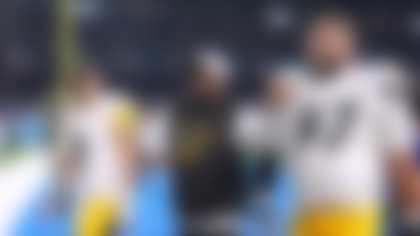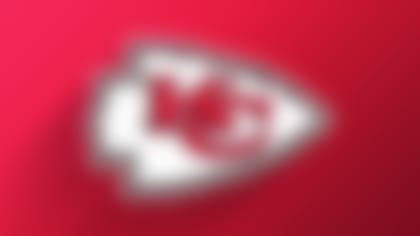The game will always be best remembered for a fateful blunder -- a missed field-goal attempt in the final seconds that simultaneously brought permanent heartbreak to the Buffalo Bills and endless celebration to the New York Giants.
Yet Scott Norwood's errant kick, while decisive, hardly captured the essence of the Giants' 20-19 victory against the Bills in Super Bowl XXV. The Giants did not merely prosper from one man's misfortune on January 27, 1991. They certainly didn't benefit from even a slight edge in physical talent; if anything, the heavily favored Bills fielded a much better collection of athletes. Jim Kelly quarterbacked the fast-paced, no-huddle offense, which led the National Football League in scoring. The Giants didn't even have their starting quarterback, Phil Simms, who was sidelined with a broken foot. Jeff Hostetler, a reserve, led the way.
The New York coaches crafted perfect strategy for offensive and defensive success. The defensive plan was so brilliant, in fact, that an original copy of it was included among the many historic items on display at the Pro Football Hall of Fame in Canton, Ohio.
Of course, that should not come as much of a surprise.
The Giants' head coach was none other than Bill Parcells, who had also led the team to victory in Super Bowl XXI. Parcells, who in December became executive vice president of football operations for the Miami Dolphins, would move on to head-coaching stints with the New York Jets, New England Patriots (whom he also guided to the Super Bowl), and Dallas Cowboys. He established a sterling reputation for making each team significantly better than he found it.
With the Giants, Parcells put together one of the very best coaching staffs ever assembled -- if not the best, although that would be subject to debate among football historians.
Two members of that 1990 staff, Bill Belichick and Tom Coughlin, will square off in Super Bowl XLII.
Belichick was in his sixth season as the Giants' defensive coordinator (he doubled as secondary coach in 1989 and '90). He would spend the next five years as head coach of the Cleveland Browns. After a four-year stint as an assistant with the Patriots and Jets, Belichick would return to New England to begin one of the greatest head-coaching careers in NFL history. He has led the Pats to three Super Bowl victories, and has them in the big game for the fourth time in seven seasons.
Coughlin was in his third year as the Giants' wide receivers coach. He went from there to become the head coach at Boston College before spending nine seasons as head coach of the Jacksonville Jaguars, leading them to the 1996 and 1999 AFC Championship games. In 2004, he would return to the Giants for a head-coaching stint that has produced a wide range of results. This season alone, he has gone from being the subject of speculation that he was on the brink of losing his job … to the Super Bowl.
Belichick and Coughlin were among six members of the staff who would become head coaches in the NFL or major-college football. The others were Romeo Crennel of the Cleveland Browns; Ron Erhardt, formerly of the Patriots; Al Groh, formerly of the Jets and currently of the University of Virginia; and Charlie Weis, of Notre Dame.
Different names. Different faces. Different places. Same approach.
When you play or work for Parcells, you do things his way -- and only his way. Comfort? That's for someone else.
"His coaching philosophy with the players was to pressure them hard -- stay on them, never relax, never let up," Weis explains. "Even when things went well he would still tell his assistant coaches to keep the pressure on. Players never knew where they stood with Bill and that was exactly the way he wanted it. He wanted them uneasy.
"The coaches felt that, too. He just dominated you. You knew he was in control and there wasn't a damn thing you could do about it. You never sought approval from him because you weren't going to get it. He would weed out who couldn't handle that. It was his way or the highway.
"I would see more players than coaches who would wash out of his program. Coaches were smart enough to adapt to it, and say, 'Okay, that's the way it is.' You had no choice if you wanted to work for him. And you wanted to work for him because he was successful."
That allowed Parcells to have his pick of the best and brightest assistant coaches in football. As with all assistants, members of the Giants staff did their most important work in the days leading up to a game. That was when they would study countless hours of film in search of an opponent's weaknesses.
And they would usually find them. They would routinely identify ways in which an opponent would unintentionally tip off a particular play it was about to run. An example was when New York's defensive assistants noticed before a game against Arizona that whenever a pass was forthcoming, the Cardinals' left offensive guard assumed a particular stance at the line of scrimmage. Furthermore, they noticed that the same guard had a different stance for a run to the right and yet another one for a run to the left.
As a result, the Giants' defense was ready to make the stop on each play.
Team effort
Parcells' uncompromising style was never clearer than during one exchange he had with his defensive assistants in the middle of the Giants' Super Bowl XXV season in 1990. It proved to be a crucial turning point for the team and the staff.
The Giants were preparing to face the Detroit Lions, who had scored 20 or more points in eight of their previous nine games. At the time, the Lions used a run-and-shoot offense, something almost no other NFL team employed at the time. During the first practice of the week, Hostetler, operating the run-and-shoot as the show-team quarterback for the sake of the Giants' starting defense, put on a dazzling display as he threw for numerous yards and touchdowns.
In a meeting that night, Parcells glared at Belichick and Groh and said, "Okay, you wizards. That might have been the worst football practice I've ever seen in my life. You guys had better go fix it!"
As intelligent as Belichick is, he is never afraid to seek advice. Even if he disagrees with the response, he will always listen. And he was particularly anxious to listen to Weis because the young assistant had previously worked at the University of South Carolina, which used the run-and-shoot offense. Weis thought the most helpful information he could share was what he had seen while studying how Texas A&M stopped the highly effective run-and-shoot attack of the University of Houston.
In Super Bowl XXV, Belichick came up with an unorthodox but extremely effective plan to handle the Bills' no-huddle offense. The Giants primarily used two alignments -- one featuring five defensive backs and three linebackers, the other featuring six defensive backs and two linebackers. In both, they only had two defensive linemen because it allowed them to drop as many as nine defenders into coverage and left little room for Kelly to throw. Their defenders also made a point of being especially physical with Buffalo's receivers, hitting them as hard as possible as soon as they made a catch.
As a result, the Bills were able to mount only four substantial drives and failed to make a third-down conversion until their final possession. Not a bad effort for a defense that had many aging players whose better years were supposedly behind them.
"Belichick is a miracle worker," recalls Everson Walls, who had normally been a cornerback for the Giants that season but spent most of the Super Bowl as a deep safety so he could better coordinate the crowded coverage. "He took a bunch of old guys and made us look good."
The Giants' offensive game plan was also devised with Buffalo's quick-moving, high-scoring offense in mind. Erhardt, New York's offensive coordinator at the time, emphasized ball control. Running behind a large and powerful offensive line that was able to outmuscle the aggressive but smallish Bills defensive front, Ottis Anderson and Dave Meggett combined for 150 yards. That and a series of short throws by Hostetler helped allow the Giants to set a Super Bowl record for possession time at 40 minutes, 33 seconds.
"Without question, the Bills were the more talented team," says Simms, lead NFL television analyst for CBS. "But we were patient. We kept running the football, eating the time up. We kept taking advantage of the aggressive players on Buffalo's defense with tiny boot passes. On each completion, there were just enough yards to get a first down. Three more plays and more time off the clock."
Still, there was nothing particularly complicated about the way Parcells views the game.
"Bill's football philosophy was pretty simple: Control the ball on offense and play great defense," Weis says. "The only time he would be more elaborate on offense over the years was when he thought his defense wasn't that good. He knew offense, defense, and special teams. His forte was defense, but just like Belichick, those guys who are great defensive coordinators also know the best ways to attack defenses because they know what gives them the most problems.
"Belichick and Parcells … you don't get any smarter than those two. They're on a different level than most everybody else in this game."
Given the collective success they've had since, the same could be said for the entire 1990 Giants coaching staff.
Have a question for Vic on anything NFL related? Don't just sit there -- send it to AskVic@nfl.com, and the best questions will be answered throughout the season right here on NFL.com.



